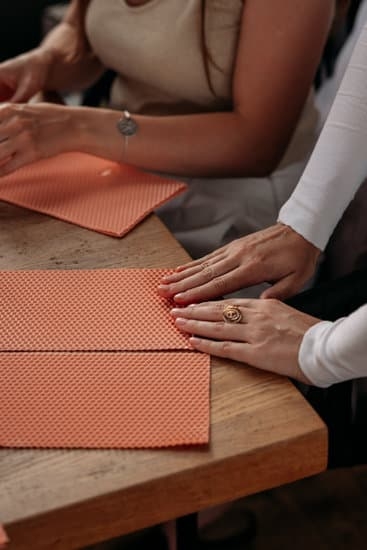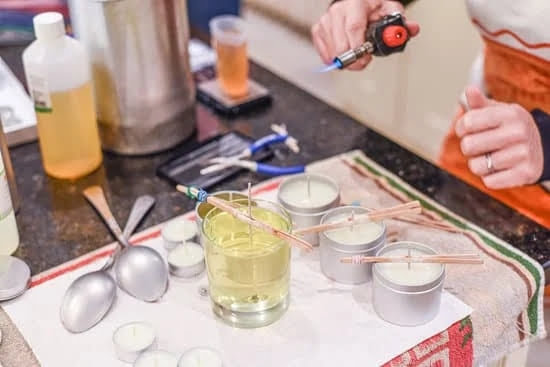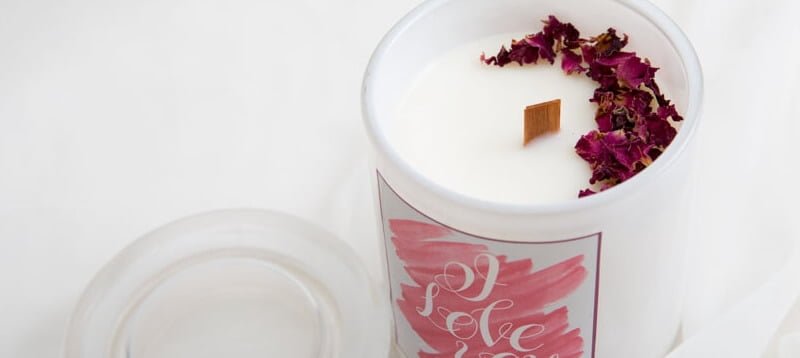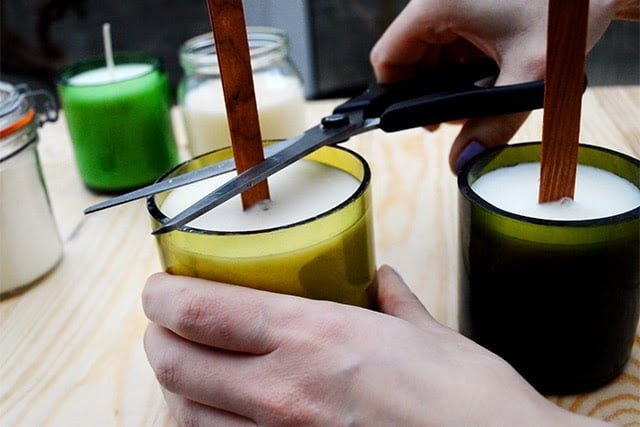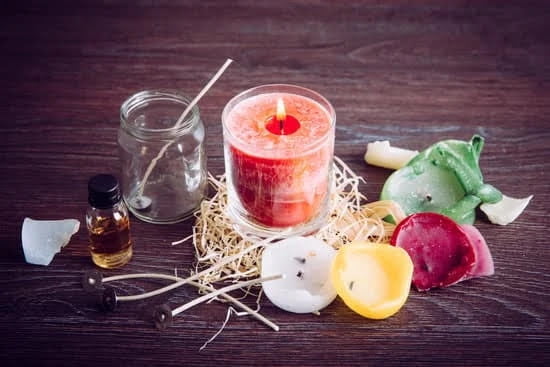Are you a candle making enthusiast looking to create beautiful and aromatic candles at home? Look no further than wax melting pots. In this article, we will delve into the world of wax melting pots and their crucial role in the candle making process. Whether you are a beginner or an experienced candle maker, understanding the significance of wax melting pots is essential for creating high-quality candles.
When it comes to crafting candles, the right equipment is key, and wax melting pots are an indispensable tool for achieving the perfect candle. From understanding the types of wax melting pots available to learning how to use them effectively, we will cover everything you need to know about this essential component of candle making.
Whether you are using soy wax, beeswax, or paraffin wax, choosing the right wax melting pot can make all the difference in your candle making endeavors.
In this article, we will explore the different types of wax melting pots suitable for various candle making projects. From electric melters to double boilers and microwavable containers, each type has its advantages and uses.
Additionally, we will discuss the best materials for wax melting pots and provide tips for cleaning and maintaining them for longevity. By the end of this article, you will have a comprehensive understanding of how to choose the right wax melting pots for your unique candle making needs.
Types of Wax Melting Pots for Candle Making
When it comes to candle making, having the right equipment is crucial to ensure the success of your projects. One of the most important tools for candle making is the wax melting pot. There are several types of wax melting pots available in the market, each with its own unique features and benefits.
The most common type of wax melting pot for candle making is the double boiler. This type of melting pot consists of two pots – one larger pot filled with water and a smaller pot placed inside it, where the wax is melted. The water in the larger pot helps to create a gentle and even heat source, preventing the wax from burning or scorching.
Another popular type of wax melting pot is the electric melting pot. This type of pot operates similarly to a double boiler but does not require an external heat source like a stove. Electric melting pots are convenient and easy to use, making them a favorite among beginner candle makers.
Some other types of wax melting pots include silicone molds, aluminum pouring pots, and pitchers specifically designed for candle making. Each type has its own advantages and disadvantages, so it’s important to consider your specific needs and preferences when choosing a wax melting pot for your candle making projects.
| Type | Features |
|---|---|
| Double Boiler | Gentle and even heat distribution |
| Electric Melting Pot | Convenient and easy to use |
| Silicone Molds | Flexible and easy to clean |
| Aluminum Pouring Pots | Durable and conductive material for faster melting |
Choosing the right wax melting pot is essential for achieving consistent results in your candle making endeavors. Whether you prefer traditional methods or modern innovations, there is a wide range of options available to meet your specific needs and budget. By understanding the different types of wax melting pots and their features, you can make an informed decision that will enhance your candle making experience.
The Best Materials for Wax Melting Pots
When it comes to choosing the best materials for wax melting pots for candle making, it’s important to consider factors such as heat resistance, durability, and ease of cleaning. The right material can make a significant difference in the quality of your candle making process. Here are some of the best materials for wax melting pots:
1. Stainless Steel: Stainless steel is a popular choice for wax melting pots due to its durability and resistance to corrosion. It can withstand high temperatures without warping or degrading, making it an ideal choice for candle making.
2. Aluminum: Aluminum is another good option for wax melting pots as it conducts heat well and is lightweight. However, it’s important to choose heavy-duty aluminum pots that are designed specifically for candle making to ensure they can handle the heat without warping.
3. Silicone: Silicone wax melting pots are a great choice for beginners or those who prefer a more flexible and easy-to-clean option. Silicone is non-stick and heat-resistant, making it a convenient choice for melting wax without the risk of sticking or burning.
4. Glass: Some candle makers prefer glass wax melting pots because they allow for easy monitoring of the melting process. However, it’s important to choose borosilicate glass that is specifically designed to withstand high temperatures without cracking.
By choosing the right material for your wax melting pot, you can ensure a smoother and more efficient candle making process while also extending the longevity of your equipment.
Remember to always consider the type of candles you plan on producing before selecting your material as this will determine which type suits you best.
How to Use Wax Melting Pots for Candle Making
When it comes to candle making, using wax melting pots is essential for achieving the perfect consistency and temperature for your wax. Here are some simple steps to follow when using wax melting pots for your candle making projects:
1. Gather your supplies: Before starting, make sure you have all the necessary supplies including your chosen wax melting pot, double boiler or electric melter, thermometer, and of course, your wax.
2. Prepare your wax: Measure out the amount of wax you will need for your candles and place it in the wax melting pot. It’s important to use a wax specifically designed for candle making, such as soy wax or paraffin wax.
3. Heat the wax: Using a double boiler or electric melter, heat the wax to the recommended temperature according to the type of wax you are using. It’s crucial to monitor the temperature closely with a thermometer to avoid overheating or burning the wax.
4. Add fragrance and dye (if desired): Once your wax has reached the correct temperature, you can add fragrance oils and dye if you want scented or colored candles. Be sure to follow specific guidelines for how much fragrance oil and dye to add based on the amount of wax being melted.
5. Pour the melted wax: Carefully pour the melted and scented/colored wax into your chosen candle molds while being mindful not to spill any. Allow the candles some time to cool and harden before removing them from their molds.
By following these simple steps, you can successfully use a wax melting pot for candle making projects and create beautiful, professional-quality candles that everyone will love.
Benefits of Using Wax Melting Pots in Candle Making
Wax melting pots are an essential tool for candle making, providing a convenient and efficient way to melt large quantities of wax. One of the primary benefits of using wax melting pots is their ability to evenly heat and liquefy the wax, resulting in a smooth and even finish for your candles. This is especially important for achieving professional-looking candles that customers will love.
Another benefit of using wax melting pots in candle making is the versatility they offer. With different types of wax melting pots available, such as electric or traditional double boilers, crafters have the flexibility to choose the best option for their specific needs and preferences. Whether it’s small-batch production or large-scale candle making, there’s a wax melting pot suitable for every project.
In addition to convenience and versatility, using wax melting pots for candle making can also lead to cost savings in the long run. By efficiently melting and handling wax, crafters can minimize waste and produce more candles with less resources. This can contribute to higher profitability for businesses or simply allow hobbyists to make the most out of their supplies.
| Benefit | Description |
|---|---|
| Even Heating | Wax melting pots provide even heating for a smooth finish in candles |
| Versatility | Various types of wax melting pots available for different project needs |
| Cost Savings | Efficient use of wax leads to less waste and higher profitability |
Common Mistakes to Avoid When Using Wax Melting Pots
Overheating the Wax
One of the most common mistakes when using wax melting pots for candle making is overheating the wax. It’s important to follow the recommended temperature guidelines for the specific type of wax you are using. Overheating can not only affect the quality of the wax but also pose a safety risk. Always use a thermometer to monitor the temperature and avoid overheating.
Not Using a Double Boiler Technique
Another mistake to avoid when using wax melting pots is not using a double boiler technique, especially when dealing with larger quantities of wax. This method involves placing the wax melting pot within another pot filled with water. This provides a gentle and even heat distribution, preventing hot spots and potential scorching of the wax.
Adding Fragrance Oil at the Wrong Temperature
Adding fragrance oil at the wrong temperature is another common mistake that can impact the quality of your candle. It’s important to add fragrance oils to your melted wax at the recommended temperature provided by the manufacturer. Adding fragrance oil at too high of a temperature can cause it to evaporate too quickly, while adding it at too low of a temperature may result in poor scent throw in your finished candle.
By being mindful of these common mistakes, you can ensure that you are getting the most out of your wax melting pots for candle making projects. Understanding proper techniques and best practices will result in high-quality candles that burn evenly and emit wonderful fragrances.
Cleaning and Maintaining Wax Melting Pots for Longevity
Cleaning and maintaining your wax melting pots is essential for ensuring their longevity and the quality of your candle making process. Proper care of your wax melting pots can help prevent contamination between different batches of wax, ensure even melting, and extend the lifespan of your equipment.
Regular Cleaning Process
After each use, it is important to clean your wax melting pots thoroughly to remove any leftover wax residue. Start by letting the pot cool down completely before attempting to clean it. Once cooled, you can use a paper towel or cloth to wipe out as much residue as possible.
Then, using warm soapy water and a sponge or brush, scrub the inside of the pot to remove any remaining wax. Be sure to rinse thoroughly with clean water and dry completely before using again.
Maintaining Your Wax Melting Pots
In addition to regular cleaning, it is important to maintain your wax melting pots to ensure their longevity. This includes checking for any signs of wear or damage, such as cracks or dents, which could affect their performance. It’s also important to keep an eye on the heating element or source, whether it’s a hot plate or a double boiler setup, and ensure that it is functioning properly.
Storage Tips
Proper storage of your wax melting pots is also crucial for their longevity. Store them in a cool, dry place away from direct sunlight and extreme temperatures. If possible, cover them with a lid or wrap them in plastic to prevent dust and debris from settling inside. Taking these steps will help ensure that your wax melting pots remain in good working condition for many candle making projects to come.
By following these cleaning and maintenance tips for your wax melting pots, you can prolong their lifespan and ensure that they continue to perform at their best for all your candle making needs.
Tips for Choosing the Right Wax Melting Pots for Your Candle Making Projects
In conclusion, the use of wax melting pots in candle making is essential for achieving high-quality and consistent results. From the different types of wax melting pots available to the best materials for their construction, it is important to carefully consider your options when choosing the right one for your candle making projects.
By utilizing wax melting pots, you can benefit from improved control over the melting process, reduced likelihood of overheating and scorching the wax, and increased safety in handling hot wax.
When selecting a wax melting pot for candle making, it is crucial to consider factors such as size, material, and heating method. Choosing a pot that is the right size for your batch sizes will help ensure efficient melting and pouring processes. Additionally, selecting a pot made from a durable and heat-resistant material such as aluminum or stainless steel can contribute to longevity and ease of cleaning.
Furthermore, keeping in mind the proper maintenance and cleaning techniques for your wax melting pot will also contribute to its longevity and performance. Regular cleaning after each use will prevent residual wax buildup that can affect future batches. With these tips in mind, you can confidently choose the right wax melting pot for your candle making projects and continue creating beautiful, high-quality candles with ease.
Frequently Asked Questions
What Is the Best Container for Melting Wax for Candles?
The best container for melting wax for candles is a double boiler, which consists of a small pot nested within a larger one. This setup allows for gentle, indirect heat to melt the wax evenly without scorching.
Can You Make Candles With Wax Melt Wax?
Yes, you can make candles with wax melt wax. Wax melts are formulated to melt at a lower temperature than traditional candle wax, so they may require different wicks and additives for proper candle making.
Can I Use a Wax Melter for Candle Making?
Using a wax melter for candle making is possible, but it may not provide the level of control needed for more precise candle making. A dedicated double boiler or melting pitcher may be better suited for this purpose.

Welcome to my candle making blog! In this blog, I will be sharing my tips and tricks for making candles. I will also be sharing some of my favorite recipes.

